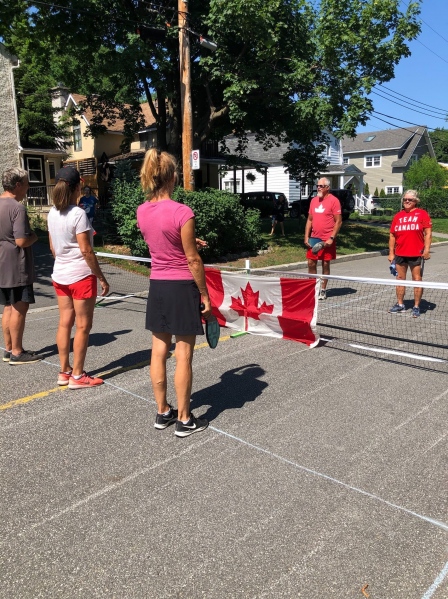 | |
Closed Streets During CovidJill Barker, Fitness Columnist and PostmediaOne of the lessons learned over the past six months is the importance of parks and green and blue spaces. With indoor activities frowned upon, and schools, gyms, playgrounds and organized sports closed for months, Canadians headed outdoors in droves to get active. The idea of getting more people outside and moving isn’t limited to the pandemic. Several densely populated cities around the world have been temporarily closing their streets to motor vehicles in an effort to provide more safe, accessible places to be active. Designed to coax more kids and families outdoors, especially in urban communities without easy access to parks and other green spaces, the Play Streets initiative (also called Playing Out) turns local streets into playgrounds several hours every week. Organized by local families or neighbourhood groups, street closures ranging from one to several blocks allow for loosely supervised unstructured and organized play involving everything from skipping rope and hopscotch to family games of soccer, basketball or tag. Canadian cities such as Toronto and Edmonton have championed Play Streets — a huge turnaround in some cases from bylaws that banned kids from playing road hockey or basketball in their neighbourhoods, and gently reminding communities that streets were built for people, not just cars.  The success of Play Streets has been widely documented, with studies reporting that the initiative has significantly increased outdoor play and took community members away from their indoor screens in favour of a healthy dose of fresh air and exercise. Researchers also noted that Play Streets fosters an increased sense of community, bringing together young and old in activities that promote good old-fashioned active fun. With the pandemic still upon us, Canadian cities and citizens should consider implementing low-cost initiatives like Play Streets and Open Streets — and not just in the summer months. With a little imagination, opening streets for play in the winter is totally doable. Traditional winter activities like street hockey, making snow forts and snowmen and tobogganing are more fun when done with the local neighbourhood kids. And with the extra space and open-air concept, physical distancing is easier, and kids and family bubbles can interact safely. So beyond providing more opportunity for Canadians to play, Play Streets and Open Streets help fulfil our need to be social, albeit from a distance — something that was in short supply during the height of the pandemic.  I created my own version of Play Streets this spring by setting up pickleball nets on a street adjacent to my house. Every Friday night, four or five couples brought their paddles, lawn chairs (spaced six-plus feet apart) and coolers for a rowdy evening of pickleball. The majority of cars that encountered our game chose to back up and find another way to their destination, giving us a hearty thumbs-up in the process. It’s a weekly routine we kept up all summer, and one that we credit with getting us through a time when social contact and opportunities for group exercise were in short supply. Beyond providing opportunities for families to get outside and move, and for neighbours to make social connections, seeing families being active encourages other families to do the same. It’s the type of social influence that leads to healthier, more connected communities. Kids who see other kids at play will quickly join in, and bring their parents. Soon everyone living on and around the street is outside running around. The more word gets out, the more streets will open up for play a few hours a week, getting a greater number of people up off the couch and away from their screens for a burst of fresh air and exercise. Active fun is contagious — in a good way! | |
| Pickleball Scoop 20200430 - December 2020 [English] |